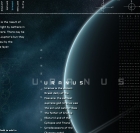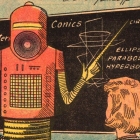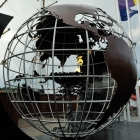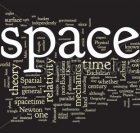-
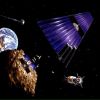 +47 +1
+47 +1Want to be an asteroid miner? There's a database for that
Asteroid mining is slowly but surely coming closer to reality. Many start-ups and governmental agencies alike are getting in on the action. But plenty of tools that would help get this burgeoning industry off the ground are still unavailable. One that would be particularly useful is a list of potential candidate asteroids to visit. While the information has been available in various places, no one has yet combined it into a single, searchable database until now.
-
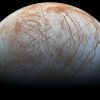 +25 +1
+25 +1NASA to develop oxygen, water on the moon within the next decade
NASA is looking to develop resources on the moon that initially include oxygen and water, and eventually may expand to iron and rare earths, and has already taken steps toward excavating moon soil in 2032, a scientist said on Wednesday.
-
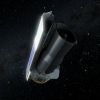 +24 +1
+24 +1A private company has an audacious plan to rescue NASA’s last “Great Observatory”
"I think it would be pretty ambitious... but really great if we could pull it off."
-
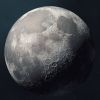 +4 +1
+4 +1Scientists discover gigantic 'structure' under the surface of the Moon
The Moon has been a subject of awe and fascination for millennia, with its shape-shifting powers and enigmatic dark side.And though it’s the one celestial body on which man has taken (small) steps, we still have big leaps to go in understanding its potential and uncovering its secrets.However, one h...
-
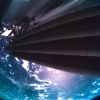 +22 +1
+22 +1Europe’s major new interplanetary spacecraft has a slight problem
It has now been two weeks since the on-target launch of the European Space Agency's 1.5 billion euro probe that is bound for the moons of Jupiter. This process had been going well until the space agency attempted to extend a 16-meter-long antenna that is part of its radar instrument. The Radar for Icy Moons Exploration, or RIME, is an important scientific instrument on the spacecraft because its ground-penetrating radar will allow for examinations of the interior of intriguing moons such as Europa and Ganymede.
-
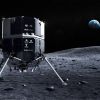 +18 +1
+18 +1Japanese lander enters lunar orbit
A lunar lander developed by Japanese company ispace has entered orbit around the moon, setting up a lunar landing attempt by the end of April. Tokyo-based ispace said that its HAKUTO-R Mission 1 lander entered orbit at 9:24 p.m. Eastern March 20 after a burn by its main engine lasting several minutes. The company did not disclose the parameters of the orbit but said that the maneuver was a success.
-
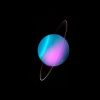 +16 +1
+16 +1A planned Uranus probe wouldn't get there till the 2040s. Here's why
Neptune and Uranus have long been neglected when it comes to solar system exploration. Many astronomers think that is a shame, as these two planets are particularly weird outliers among the bodies that orbit the Sun. Uranus, for example, the seventh planet from our Sun, has a unique tilt that makes it appear to spin sideways, orbiting the Sun like a rolling ball while circled by nine, dense rings. Both Uranus and Neptune may also have diamond rain in their atmospheres.
-
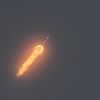 +11 +1
+11 +1NASA tested new propulsion tech that could unlock new deep space travel possibilities
With the successful launch of Artemis I behind it, NASA has been doubling down on efforts to make deep space travel – and it’s reported future trips to the Moon and Mars – easier to achieve. We’ve already reported on why the Space Launch System used for the Artemis mission isn’t sustainable, but now NASA has tested a new propulsion tech that could cut down on the fuel needed for those missions.
-
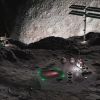 +26 +1
+26 +1Space mining startups see a rich future on asteroids and the moon
A cash flow cascading from the heavens is a provisionary but promising harvest from asteroid mining. It's already a "claim jumping" enterprise with assertions that billions, trillions, even quadrillions of dollars are looming in deep space, ripe for the picking and up for grabs. Several space mining groups, eager to dig into extraterrestrial excavation of asteroids, have already come and gone. Left behind are torn, tattered and beleaguered business plans.
-
 +11 +1
+11 +1NASA Reveals Photo Of Red-Hot Lava On Jupiter's Moon
Io Volcano Observer mission said that the moon is "a true volcanic wonderland with hundreds of erupting volcanoes gushing tons of molten lava."
-
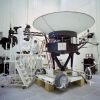 +21 +1
+21 +1Voyager, NASA's longest-lived mission, logs 45 years in space
NASA's twin Voyager probes have become, in some ways, time capsules of their era: They each carry an eight-track tape player for recording data, they have about 3 million times less memory than modern cellphones, and they transmit data about 38,000 times slower than a 5G internet connection. Yet the Voyagers remain on the cutting edge of space exploration.
-
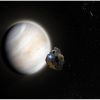 +21 +1
+21 +1Rocket Lab will self-fund a mission to search for life in the clouds of Venus
Never let it be said that Rocket Lab founder Peter Beck lacks a flamboyant streak. Although his Electron launch vehicle is one of the smallest orbital rockets in the world, Beck gleans every bit of performance from the booster he can. On just the rocket's second launch, in January 2018, he added a disco-ball like geodesic sphere called "Humanity Star" to give humans a small and bright shining object to, however briefly, gaze upon in the night sky.
-
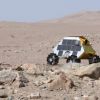 +19 +1
+19 +1Startups raise millions for lunar rovers and asteroid mining
Two startups recently raised a combined $25 million in seed rounds to advance plans for lunar and asteroid missions, showing continued interest in space startups despite broader market uncertainty. Lunar Outpost announced May 24 it raised a $12 million seed round from several investors. Explorer 1 Fund led the round with participation from Promus Ventures, Space Capital, Type 1 Ventures and Cathexis Ventures.
-
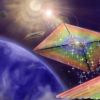 +4 +1
+4 +1NASA awards $2 million to advance rainbow-coloured solar sail project
Funding of $2 million has gone to researchers developing a new type of solar sail as part of NASA’s Innovative Advanced Concepts (NIAC) programme, which backs projects that have the potential to transform future missions.
-
 +2 +1
+2 +1Here's Why Hibernation in Space May Not Be Possible For Future Space Travelers
Sending humans virtually anywhere in space beyond the Moon pushes logistics of health, food, and psychology to limits we're only just beginning to grasp. A staple solution to these problems in science fiction is to simply put the void-travelers to bed for a while. In a sleep-like state akin to hibernation or torpor, metabolism drops, and the mind is spared the boredom of waiting out endless empty hours.
-
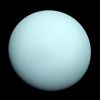 +3 +1
+3 +1NASA has been ignoring Uranus. That may soon change.
The ice giant could represent the galaxy’s most common type of planet, but we know very little about it. Now scientists have declared that seeing the world up-close is a top priority.
-
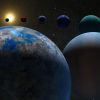 +18 +1
+18 +1Four Of Our Planets Are Missing. NASA Announces 5,000th New Alien World But Some Are Imposters Say Scientists
Are there rogue stars masquerading as planets in NASA’s Exoplanet Archive?
-
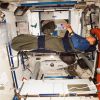 +15 +1
+15 +1Hibernate for a trip to Mars, the bear way
Hibernating astronauts could be the best way to save mission costs, reduce the size of spacecraft by a third and keep crew healthy on their way to Mars. An ESA-led investigation suggests that human hibernation goes beyond the realm of science-fiction and may become a game-changing technique for space travel.
-
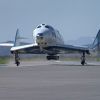 +14 +1
+14 +1Virgin Galactic stock falls as space tourism company plans to raise up to $500 million in debt
Shares of Virgin Galactic fell in trading on Thursday after the company announced plans to raise up to $500 million in debt. “The company intends to use the net proceeds from the offering to fund working capital, general and administrative matters and capital expenditures to accelerate the development of its spacecraft fleet,” Virgin Galactic said in a statment.
-
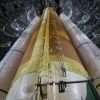 +14 +1
+14 +1Please do look up, because space is a thrilling place in 2022
There's been a lot of hubbub surrounding Don't Look Up, a recent Netflix movie about a planet-killing comet heading towards Earth, but 2022 is actually a great year to turn your eyes to the sky. There will be missions to Mars and the moon, a dance of planets and eclipses to enjoy. And better yet, no giant comet that threatens to destroy life as we know it on Earth.
Submit a link
Start a discussion
